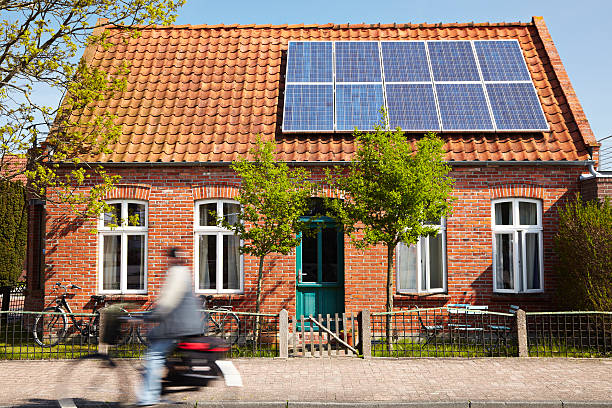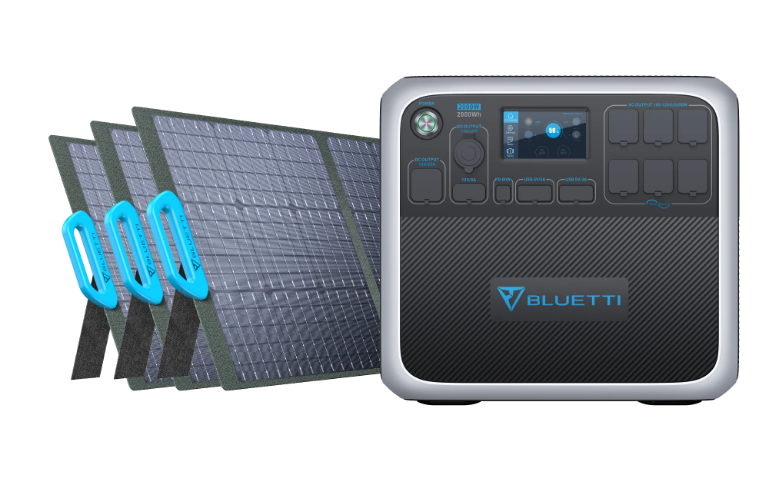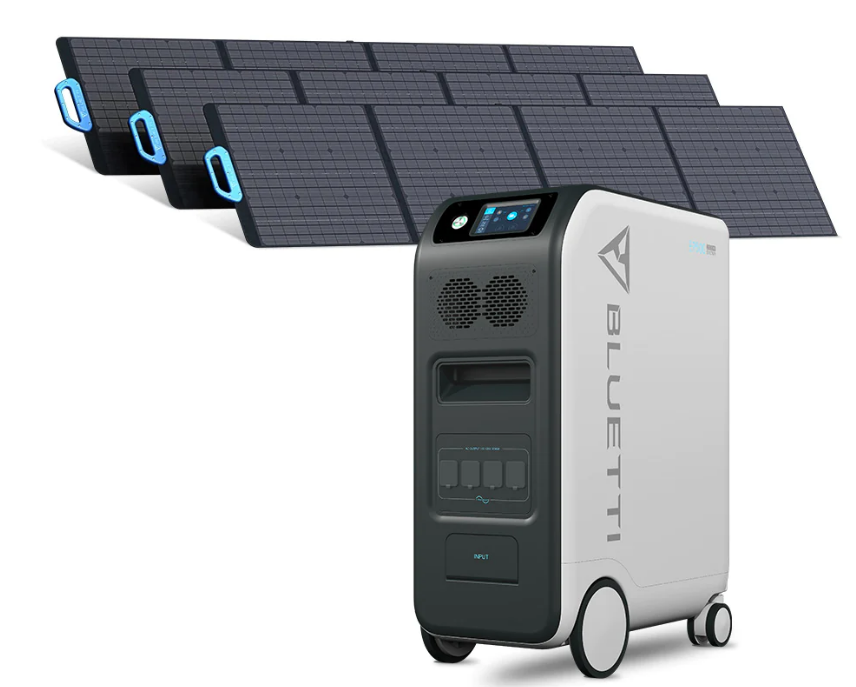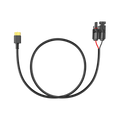Your cart is empty
Shop our productsSolar power production has been a rising trend, even at domestic levels. Now, powering your house through solar panels is not a new thing to be surprised at. However, have you ever heard of solar-powered tiny houses?
A house that is sometimes mobile and you can travel with the house to places which are off-grid. If you have crossed the confines of grid-powered areas, you can still rely on your solar power setup to power your tiny house.
In this blog, you will explore all about solar-powered tiny houses, which you must know. Let us dive deeper into the topic and find out something that can help us in our daily lives.
What Is a Powered Tiny House?

Solar panels and tiny, cozy homes make a good duo. However, before that, let’s define what a solar-powered tiny house is. Solar-powered homes are small households that are not directly connected to the power grid. Instead, these have in-house power stations that work by producing electricity from solar energy.
You will be able to find some solar panels lying on sloped rooftops or anywhere on the ground, angled in a way to absorb maximum sunlight. These solar panels are then connected to batteries. that store the electricity produced by solar energy. You can use this stored electricity for later use when there is no sun or on a rainy day. Here are some of the advantages you can enjoy while living in the solar-powered tiny house:
- Solar energy setup at your home will, by default, reduce electricity costs.
- Tiny homes will need fewer sources for living and less space; you will be able to cut off the carbon footprints under your credit.
- Furthermore, when you deploy solar energy setup to power your house, you are reducing the carbon footprints you might consume if you were using a non-renewable source of electricity.
- You can move your tiny homes and voyage to places you like the most if your tiny home is mobile like most of its kind.
- With solar panels and attached batteries churning up the solar energy into electricity, you don’t have to stress about power outages or blackouts in your tiny house.
Off-Grid Solar-Powered Vs. Grid-Tied Solar-Powered Tiny House
Solar-powered tiny houses are usually classified into two categories: off-grid solar-powered and grid-tied solar-powered tiny houses. Before we dive deeper into the topic, you definitely need to know the difference between both these houses.
Off-Grid Solar-Powered Tiny House
When you have an off-grid solar-powered tiny house, it means you are completely independent of the electric grid. In this type of house, you produce electricity that is enough to support your lifestyle, and you do not rely on the grid system.
This type of solar-powered tiny house is preferred by the masses for obvious reasons. You get the freedom of moving to places that are off-grid. Furthermore, it comes with no electricity bills.
Grid-Tied Solar-Powered Tiny House
On the other hand, the grid-tied solar-powered tiny house is affiliated with a utility company grid. However, one of the advantages of grid-tied solar-powered tiny houses is that they do not require charging and managing batteries.
If the clouds are blocking the sun and there is no sunlight for energy production, you can then switch to grid-powered electricity. However, if there is an outage or power blackout, it won’t work for you, not even the solar plates you have.
How Many Watts Do You Need to Power a Tiny House?

Have you been wondering how many watts this solar-powered tiny house requires? Well, before we get to its precise answer, let us explore what Watt actually is. A watt is an SI unit for energy consumption and it determines how much electric power a device engulfs in a particular period.
On the other hand, Watt-hour is the amount of energy consumed by a device in an hour. Here is how you can find out the watts used by an appliance or an electronic device at your solar-powered tiny house:
Watts = Volts x Amps
A solar-powered tiny house uses something between three to four kilowatts per day. However, you can calculate the number of watts you need to power a tiny house by calculating the power requirements of each device. You can then add the watt requirements of each device to explore the watt requirements of your solar-powered tiny house.
The Pros and Cons of Solar-Powered Tiny Houses
The solar-powered tiny house is good for your budget and the ecosystem. However, it does come with some cons. Here are some of the pros and cons of solar-powered tiny houses:
Pros
- Solar-powered tiny houses have low-power-consuming devices. As a result, you have fewer utility bills to pay at the end of the month.
- Solar energy is a renewable source that is eco-friendly and helps you to reduce your carbon footprint.
- Solar panels are the cheapest source of electricity, even when compared to all other renewable sources of energy.
Cons
- Solar-powered tiny houses are small, which can make it challenging to install solar panels on the rooftops of these tiny houses.
- When solar panels produce electricity for your tiny house, the DC power that is produced needs to be converted into AC electricity. This is done by an inverter and solar panels with a battery, and an inverter might be too much for your tiny home.
- Solar panels without batteries will leave you with no electricity at night or on days when there is no sun on the horizon.
BLUETTI Solar Generator For Tiny House
For your solar-powered tiny house, you will need a solar generator that is capable of powering your house aptly. Here are some of the recommendations for your solar-powered tiny house:
1. BLUETTI AC200P + 3*PV200

This BLUETTI AC200P + 3*PV200 can provide you with 2,000 watts of AC power on the go. However, it can surge up to 4800 watts for a moment. The AC200 P battery can store as much as 2000 watt-hours of energy. Furthermore, you can use 17 ports to connect with multiple devices at your home with the power station.
2. BLUETTI EP500 + 3*PV200

The BLUETTI EP500 + 3*PV200 comes with a 5,120-watt-hour battery which is made of LiFePO4 and guarantees durability and reliability. You can charge and discharge the battery 6000 times, and it will still be working at its maximum efficiency. It provides 2,000 watts of power and is portable. Furthermore, you can remotely control the power station even when you are away from your tiny house.
This also comes with 3 BLUETTI PV200 Solar Panel, which is monocrystalline and up to 23.4% efficient. It comes with ETFE, which gives the solar panel durability.
3. BLUETTI AC200MAX + 2*B230 + 3*PV200

The BLUETTI AC200MAX + 2*B230 + 3*PV200 can provide 2,200 watts of power on the go. However, if you are looking for temporary power surges, the BLUETTI AC200MAX can provide as much as 4800 watts of energy. The entire kit can store up to 6144Wh of energy, due to the 2 BLUETTI B230 Expansion Batteries.
Furthermore, this power station can also be charged through solar panels. There are six different ways you can charge the BLUETTI AC200MAX Portable power station. For instance, you can use your car’s power outlet, solar panels, a lead-acid battery, a generator, a wall outlet, etc.
This also comes with 3 BLUETTI PV200 Solar Panel, which are 23.4 % efficient and compatible with most solar generators.
What You Need to Consider When Using Solar to Power Tiny House?
When shopping for a solar power generator for a solar-powered tiny house, there are certain things you should keep in mind. First off, you must calculate the total electricity consumption at your solar-powered tiny house. You should include the power consumption of each and every appliance at your home, ranging from bulbs to mini-fridges, etc.
Next, you should look into the quality of solar panels. For instance, monocrystalline solar panels are much more efficient but are expensive. On the other hand, Polycrystalline panels are less efficient but are more affordable.
However, you must know that the quality can affect the durability and reliability of your product. You should also look into the power production capacity of the solar power setup you are about to buy for your tiny house.
Here are some of the factors you must consider:
- Your Energy Needs
- Solar Panel Quality
- Power Production Capacity of Power Station
- Battery storage capacity
- Inverter size and quality
Final Thoughts
If you are looking for power options for your tiny house, going off-grid is a good choice. The off-grid solar-powered tiny house is independent of the power grid and is not prone to energy outages or blackouts. You can even store the electricity produced through solar panels for later use.
Solar power generators are the best source of renewable energy production that cuts off your carbon footprint. If you are looking for the best solar power stations for your solar-powered tiny house, you can choose between the 3 Best Solar Generators To Buy in 2024.
Shop products from this article
Be the First to Know
You May Also Like

What Does a 30% Federal Solar Tax Credit Mean and How to Apply?
Governments around the world are offering programs that encourage homeowners to switch to solar energy. Among the most notable programs is the 30% Federal Solar Tax Credit. It reduces your...

Deadly Flooding Devastates U.S. South and Midwest — What You Need to Know

















































































































































































































































